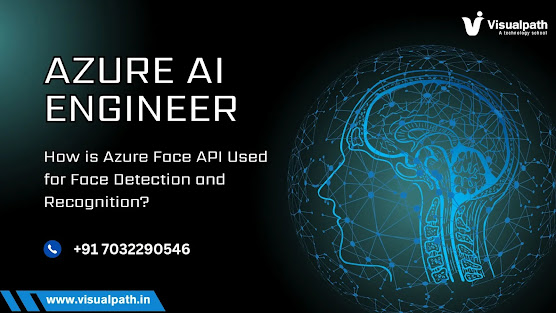- Get link
- X
- Other Apps
- Get link
- X
- Other Apps
How is Azure Face API Used for Face Detection and Recognition?
Facial recognition is becoming a critical component of modern
applications, from security systems to personalized experiences. Azure Face API,
a part of Microsoft Azure Cognitive Services, provides powerful capabilities
for detecting and recognizing human faces in images and videos. It is widely
used in industries like retail, healthcare, banking, and more to drive
intelligent insights and automate user identification.
 |
| How is Azure Face API Used for Face Detection and Recognition? |
1.
Introduction to Azure Face API
Azure Face API allows developers to integrate face detection and
recognition features into applications. It can identify attributes such as age,
gender, emotion, facial hair, and even if the person is wearing glasses. These
features enable intelligent interactions and real-time personalization in a
secure and scalable manner.
2.
Core Functionality and Use Cases
One of the primary uses of Azure Face API is real-time face detection,
which can pinpoint human faces within an image or video. This functionality is
essential for surveillance, attendance systems, and identity verification.
Additionally, face recognition matches detected faces against a stored
face database, making it ideal for login systems and multi-factor
authentication.
By learning Azure Face API as part of Microsoft Azure
AI Online Training,
professionals can gain hands-on experience in building such advanced AI-driven
applications.
3.
Key Features of Azure Face API
o Face
Detection: Detects one or more human faces and provides a face rectangle and face
landmarks.
o Face
Verification: Compares two faces and determines if they belong to the same person.
o Face
Identification: Matches a detected face against a group of known persons.
o Face
Grouping: Organizes unknown faces into groups based on visual similarity.
o Face
Similarity Search: Finds faces that look similar to a specified face.
4.
Face Detection Implementation in Azure
To implement face detection:
o Set up
an Azure Face API resource.
o Use
REST API or SDKs (C+, Python, and Java)
to send image data.
o Process
the returned JSON response containing detected face data (like position and
attributes).
5.
Face Recognition Workflow
o Enroll
users by creating a person group and adding face images.
o Train
the person group using the training API.
o Use the
face identification API to match new images against the trained group.
This pipeline is commonly used in applications such as automated check-ins and
employee attendance systems.
6.
Security and Compliance
Azure Face API supports enterprise-grade security. Data is encrypted in
transit and at rest. Developers can control access via role-based access
control (RBAC) and secure keys. Microsoft ensures compliance with international
privacy standards such as GDPR and ISO/IEC
certifications.
7.
Integration with Other Azure Services
Face API integrates seamlessly with services like Azure Functions, Logic
Apps, and Power Automate for building workflows. Additionally, when used with
Power BI or Azure Synapse Analytics, it can provide facial insights in
dashboards for business intelligence.
8.
Responsible AI and Ethical Considerations
Microsoft emphasizes the responsible use of AI. Developers are
encouraged to avoid misuse, ensure consent in data usage, and implement fairness
across diverse demographic groups. These practices are discussed thoroughly in Microsoft Azure
AI Engineer Training, ensuring professionals build AI responsibly.
9.
Benefits of Using Azure Face API
o Scalable
and reliable architecture
o High-accuracy
facial recognition
o Easy
integration with existing systems
o Detailed
documentation and SDK support
o Enterprise-grade
security and compliance
10.
Career Opportunities in AI Development
As businesses increasingly adopt AI-powered facial recognition, the
demand for skilled professionals with Azure AI expertise is rising. By
enrolling in Azure AI
Engineer Training, learners can build the practical skills needed to
develop facial recognition apps, secure systems, and user-facing AI solutions
that comply with ethical standards and regulations.
Conclusion
Whether you're creating security systems
or building personalized user experiences, learning how Azure Face API supports
face detection and recognition is crucial in today’s technology landscape. It
provides a dependable, scalable, and secure platform that adapts to growing
industry demands. Strengthen your skills, deepen your knowledge, and develop
advanced AI solutions using this powerful Azure capability.
Trending Courses: SAP AI, Azure
Solution Architect, Azure
Data Engineering,
Visualpath stands out as the best
online software training institute in Hyderabad.
For More Information about the Azure AI
Engineer Online Training
Contact Call/WhatsApp: +91-7032290546
Visit: https://www.visualpath.in/azure-ai-online-training.html
Ai 102 Certification
Azure AI Engineer Certification
Azure AI Engineer Online Training
Azure AI Engineer Training
Azure AI-102 Training in Hyderabad
Microsoft Azure AI Engineer Training
- Get link
- X
- Other Apps
Comments
Post a Comment